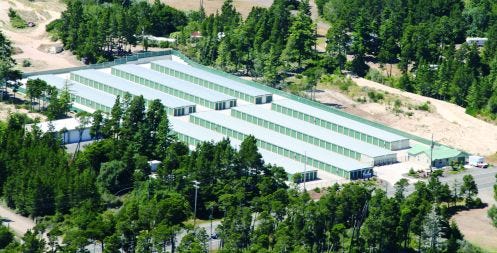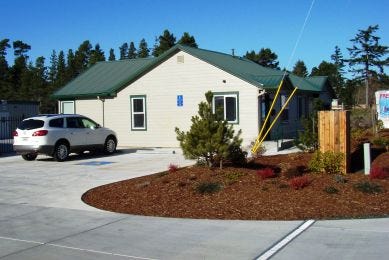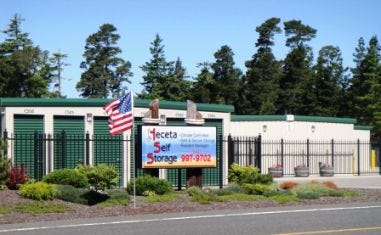Looking to Build Your First Self-Storage Facility? Read These Insights First
Self-storage development is much more complicated than it looks on paper. Heres an in-depth look at the key areas every self-storage owner or developer needs to understand when building a new facility.
June 28, 2012

By Jamie Lindau
On paper, self-storage development seems like an easy and profitable way for people to get into business for themselves. The buildings can be the most basic construction available, and there just doesn’t seem to be a downside. In reality, once you get into the process, it’s much more complicated than it looks. A new self-storage developer must make many choices today that will impact him for decades to come.
The bad news: In the last five years I’ve seen more people go bankrupt building self-storage than in the previous 20 years. In most cases, factors leading to failure include building in a poor location, building too many units, or construction costs that couldn’t be supported by the area’s rental rates.
The good news: In the last four years, there has been limited new development, allowing time for existing facilities to fill and stabilize. As a result, there are more opportunities for a new developer to locate a building site where demand exists. Here’s an in-depth look at the key areas every new owner or developer needs to understand when building a new facility.
Selecting a Self-Storage Location
The biggest concern for owners today is to make sure the area has demand for more units. Owners/developers should do a preliminary search of the competition to evaluate the market. If you see sites that are three or four years old and are only at 70 percent occupancy, this tells you the market is still soft and you should look somewhere else.
If you find an area where the facilities have an occupancy of more than 90 percent, it might need further study. However, before hiring a feasibility consultant, do a thorough investigation of the available land that might be good for self-storage development.
First, you need to know what kind of zoning is required to develop self-storage in the area. Zoning is often the biggest hurdle. You might find a great location, but if it’s zoned with a C-1 classification and self-storage is only allowed in “business highway” or “light industrial,” you may be chasing your tail. It’s important to find land on which you can actually build.
Ideally, you’re looking for an affordable, properly zoned, flat, highly visible piece of property with a high traffic count, which is close to population centers (or at least closer than the competition). You’ll rarely find all of those qualities in the same parcel. Once you find a piece of property that fits your criteria, hopefully it will be large enough to build a profitable self-storage facility.
Economic Feasibility
Now we get to the economic feasibility of the site. There are many scenarios you may need to consider to determine if you can build a profitable business.

There are many ways to lay out a site. It’s important to maximize potential profit through your design, but you still need to be able to consistently keep the facility full. Many people say, “I want to make sure I have all drive-up units.” Customers may prefer this for convenience, but the design may lose too much land to driveway space and, therefore, may not be the best choice in all areas.
When looking to maximize the profitability of a site, first consider extra-wide, single-story buildings. This increases your percentage of rentable square footage on the land. By adding climate control to the interior units in the middle of the building, you can also increase the rental rates. Adding additional levels is another approach, although the expense of an elevator and space consumed by stairwells cuts into the bottom line. Armed with competitor rates in your area and ballpark building costs, you can begin to evaluate whether to continue exploring a particular site.
Creating and Executing a Site Plan
When developing your site plan, make sure you have an attractive, functional office layout with good curb appeal. The layout should allow your customers to get into the office without going through the gate. Place the gate keypad so there’s room for a car or truck to pull in and enter a code without blocking the street or sidewalks. Design the driveways to flow throughout the site and exit through that same gate if possible. Avoid creating dead ends, as the last thing you want is drivers backing out of an aisle. The general public isn’t good at driving backward, especially in a rental truck.
Once you have a good idea of where and how you want to build, take the plan to the city planning authority for review. In many areas, you’ll need to conform to the recommendations of the architectural review board. This means they may dictate how your project must look. Developers are often irritated when the city  issues requirements that cost them money, but in some respects, they’re forcing you into building a nicer facility that will most likely help you rent units.
issues requirements that cost them money, but in some respects, they’re forcing you into building a nicer facility that will most likely help you rent units.
That being said, you’ll still have to make sure you can afford all these extras while making the project economically feasible. In some communities, meeting the architectural standards is so costly that you cannot get enough rent out of the project to make it viable. In these areas, you may find the city is more receptive to a plan that involves converting an existing vacant building into self-storage.
Working With a Team
Once your plans are approved from the planning commission, you’ll need to build a team of experts to ensure the project is constructed properly and on time. One of the most visible choices you’ll make is your building type. Look for a building supplier and builder with experience in the structures you’re planning to build, and visit sites of their other customers to see the buildings in person.
Choosing buildings may seem simple, but there are a number of variables to consider. If your quotes are coming in with wide variation, dig in and find out why. Consider the long-term effects of your construction type on maintenance and insurance expenses. For example, steel buildings are less costly to insure than wood-frame ones.
After you decide on a building layout, you’ll need to hire a site engineer to ensure it functions with the drainage on your site. It’s imperative you have a properly drained facility. In my experience, this is one of the most common mistakes on existing sites.
Some owners/developers will often serve as their own general contractor. However, on larger projects or those that are complex, it’s a good idea to hire a general contractor to oversee construction. If you do plan to be your own general contractor, it’s imperative you work with qualified subcontractors.
No matter what you have on paper for that grading plan, there will always be issues. The grading and concrete contractors can make or break your project, and problems with the foundation or grading/drainage are not easily remedied. A classic mistake is after the foundation is installed and the concrete contractor is paid, your building erector shows you all the mistakes that were made. At that point, you no longer have any leverage to make the necessary changes.
 When I talk to existing self-storage owners, I always ask what they regret from their last project. The No. 1 item is they wished they made the front of their project and office nicer. Don’t skimp on this item. Remember, you’re not just building to compete in your market today, you’re making sure your new project is competing well into the future.
When I talk to existing self-storage owners, I always ask what they regret from their last project. The No. 1 item is they wished they made the front of their project and office nicer. Don’t skimp on this item. Remember, you’re not just building to compete in your market today, you’re making sure your new project is competing well into the future.
You may see some opportunities in your market to get into self-storage, but be sure you fully review all aspects of your project. Work with experienced people, and they will help guide you to a quality project without repeating the mistakes others have made. Self-storage isn’t a get-rich-quick scheme. It’s a methodically slow business where diligence and hard work pay off in the long run.
Jamie Lindau is a self-storage owner and the director of marketing and product development at Sun Prairie, Wis.-based Trachte Buildings Systems, which designs, manufactures and erects a full line of pre-engineered and customized steel self-storage systems, including single- and multi-story, portable storage, interior partition and corridor, and canopy boat/RV. For more information, call 800.356.5824; visit www.trachte.com.
You May Also Like





